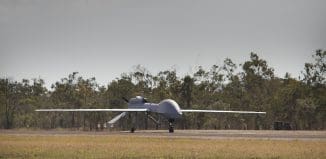Immediate Response SWAT Team to Cope with Explosive UAVs

This post is also available in:  עברית (Hebrew)
עברית (Hebrew)
Small weaponized unmanned aircraft are easy to build, but hard to detect and have become a considerable threat, as flying IEDs for terrorists, and target-spotters for Russian rocket artillery. Examples vary from the kamikaze drone developed by Kalashnikov to the 2018 attack against the president of Venezuela and Houthi rebels attacks against Yemen’s military forces.
The US defense administration is currently looking for a quick-response capability in this field, in spite of the availability of many technological counter-drone solutions. The Pentagon wants a counter-drone SWAT team to be put together asap by Defense Digital Service (DDS), applying tech directly to combat. The aim is to detect, hack, and jam enemy drones. Instead of physically stopping the drones, the Pentagon team wants to focus on hacking and jamming the drone control systems.
The applications will not be restricted to small drones but rather be also relevant to broader DoD systems, such as the Joint All-Domain Command & Control – JADC2.
DDS director Brett Goldstein has started to form a rapid-response “SWAT team” to counter the threat. The team is “an interdisciplinary, multi-modal group ranging from electrical engineers to radiofrequency experts to software engineers,” Goldstein told breakingdefense.com.
The urgency stems from the fear that “ there will be a new small-UAV threat which we don’t have a modality to detect and defeat, and that can put our troops and our partners at risk,” as he explains.
How will this work? The Pentagon wants to use commercial technology where possible and “maintain a SWAT team of folks who can immediately respond. That way when there is a gap and commercial isn’t there — [if] a new threat appears this afternoon in the small-UAV space — we will work the problem right now, [and] we don’t have to wait for something to come up in the commercial space.”




























